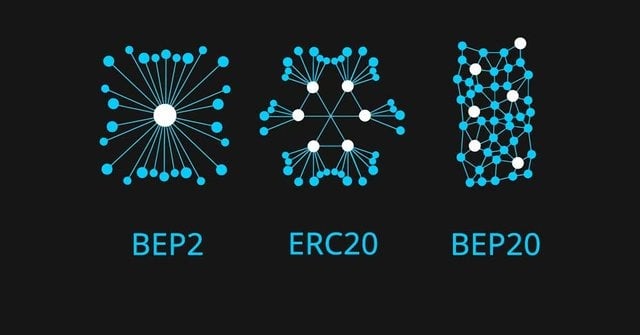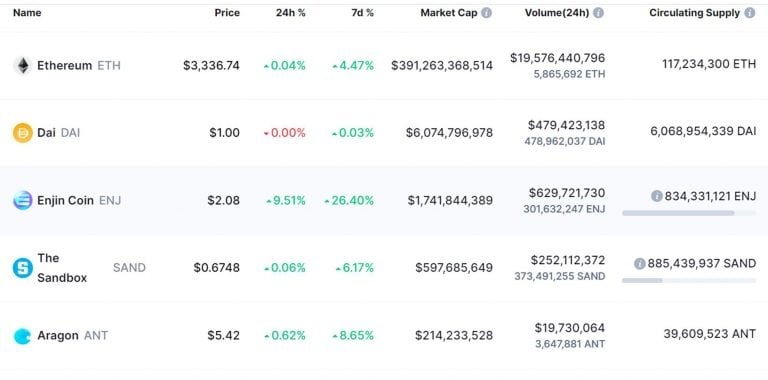In this article, we will discuss:
What is a token pattern?
Tokens are digital units within a blockchain platform, often specific to an application, that are used for purposes such as the following:
- making transactions
- storing value
- Acquire digital assets such as game credits
- Governance access / voting rights for the associated platform or app
Every year, hundreds of new decentralized application (DApp) projects issue their own tokens on blockchains such as Ethereum and BSC. For these tokens to be compatible with the blockchain underlying platform, they must adhere to the platform’s token standards.
Token standards define the rules for issuing and implementing new tokens. Standards generally include requirements to specify the following:
- The total token supply limit
- The token minting process
- The token writing process
- The process for performing transactions with the token
The standards are designed to help prevent fraud, technical incompatibilities between tokens, and issuance of tokens not aligned with blockchain principles. For example, the rules for total supply and minting of new tokens help to contain the possible depreciation of the token's value.
Popular token patterns
BEP2, BEP20 and ERC20 are three of the most popular token patterns.
What is BEP2?
BEP2 is the token standard used by the BNB platform. The standard provides specifications for issuing tokens on this blockchain. BEP2 token transactions are supported by many popular wallets such as Trust Wallet, Ledger and Trezor Model T wallets. If you want to make transactions using BEP2 tokens, you will need to use BNB currencies to pay for gas, ie transaction fees.
An advantage of BEP2 is the convenience of trading between different cryptocurrencies in the decentralized exchange format (DEX) . However, BEP2 does not support smart contracts , which many tokens and DApps depend on for their functionality.
What is BEP20?
The new blockchain is designed to be compatible with the Ethereum Virtual Machine ( EVM ), Ethereum's platform for developing smart contracts.
BEP20 is the token standard used by BSC and is a versatile standard designed to be compatible with Ethereum's BEP2 and ERC20.
The BEP20 and BSC have opened up opportunities for users to access the large and growing number of DApps. A few months after its release, BSC became Ethereum's main challenger for the development of tokenized DApps.
Similar to BEP2, the transaction with BEP20 tokens requires BNB coins to pay for gas. BEP20 is currently supported by eight wallets, including Arkane Wallet and Math Wallet.
You can also transact between BEP2n and BEP20 using a “Bridge”. This cross-chain service is designed to facilitate interoperability between various blockchains, including Ethereum and TRON (TRX).
What is ERC20?
ERC20 is a standard used by the Ethereum blockchain for fungible tokens. Fungible tokens have a standardized and non-unique value for each token unit. Cryptocurrencies are the most obvious examples of fungible tokens, as each unit of a specific cryptocurrency is indistinguishable from another unit. For example, each Ether is indistinguishable and is worth the same amount as any other Ether.
In this sense, fungible tokens are different from non-fungible tokens (NFTs) , which have a unique non-standard value assigned to each token. Ethereum has another standard for NFTs, called ERC721.
ERC20 is widely used for developing smart contracts for DApps on Ethereum. Gas fees are paid in ether.
Due to the popularity of the ERC20, ERC20 token transactions are supported by a large number of wallets, including MyEtherWallet, MetaMask and Trust Wallet.
BEP2 vs. BEP20 vs. ERC20: Which is the best?
Given the growing popularity of smart contracts and DApps, BEP20 and ERC20 tokens are used much more actively than BEP2. BEP2 may be of interest to someone who wants to trade cryptocurrencies using multiple currency pairs. However, BEP2, due to its lack of support for smart contracts, will not allow you to access the rich world of DApps. In this respect, the real confrontation is between the BEP20 and the ERC20.
BEP20 vs. ERC20: Standard Specification Requirements
The main purpose of a token pattern is to specify parameters, called functions in the blockchain world, that are used by smart contracts, portfolios, and markets when interacting with the token. Both ERC20 and BEP20 include six roles that can be specified for a token. These functions serve, respectively, the following purposes:
- Indicating the total supply of the token
- Showing the token balance of an address on the network
- Define how tokens are sent to an address
- Define how tokens are sent from an address
- Specify whether and how multiple withdrawals of an address are allowed
- Specify limits on the values an address can draw from another address
BEP20, as a newer standard extending ERC20, has four additional functions that respectively specify the following information:
- the name of the token
- the token symbol
- The number of decimals for a token unit
- The token owner's address
In this sense, BEP20 can be described as more fully specified.
BEP20 vs. ERC20: Transaction fees (also known as gas fees)
Compared to the ERC20, transactions based on the BEP20 involve much lower fees, in large part thanks to the BSC's Proof of Probation Block Validation (PoSA) method. In the PoSA model, validation nodes wager a certain number of BNB coins to verify a transaction. The top 21 nodes with the highest staked BNB values receive validation rights.
An average transaction using BEP20 tokens will likely cost no more than a few cents in fees. In comparison, the average gas transfer fee for the ERC20 token is around $12. In short, when it comes to gas fees, the BEP20 is the clear winner over the ERC20.
BEP20 vs. ERC20: Block Check Speed
The PoSA method also offers BEP20 transactions faster execution speeds compared to ERC20 transactions. Although individual transaction check times vary, average block check times on the underlying blockchains are about 3 seconds for BSC and about 15 seconds for Ethereum. This means that a typical BEP20 transaction will likely run 5 times faster than a similar ERC20.
However, Ethereum's planned move from Proof of Work (PoW) to Proof of Participation ( PoS ) by the end of 2021 is expected to significantly reduce runtimes for ERC20 transactions.
BEP20 vs. ERC20: variety of tokens
Ethereum is the world's largest smart contract platform, boasting around 3.000 DApps, the vast majority of them based on the ERC20 standard. By comparison, BSC currently hosts just over 800 DApps, with the vast majority based on BEP20. However, the spectacular growth rate of the BSC in a period of less than a year since its launch has led to an explosion in the number of BEP20 projects.
If you prefer to invest in more established DApp tokens, ERC20 tokens can offer you a wider choice. However, for newer DApp projects, BEP20 tokens are a good alternative.
BEP20 vs. ERC20: Platform Security
While BEP20 tokens involve cheaper gas rates and faster runtimes, BSC's PoSA validation model has been criticized for its potential security weaknesses. The main complaint concerns the lower levels of network decentralization when transactions are approved.
The BSC has only 21 validators selected for block verification. In comparison, Ethereum has more than 70.000 validators distributed across its network. The low number of validators in the BSC can raise trust issues among potential users.
In essence, it can be argued that BEP20 tokens offer superior gas rates and runtimes at the expense of security and decentralization. For someone highly focused on security, ERC20 tokens, comparatively speaking, can provide added peace of mind.
Conclusion
For a person interested in DApps and tokens, the main point is that BEP2, BEP20 and ERC20 refer to the token patterns used by their respective blockchains. When your wallet offers token transfer using these standards, it simply means that the transaction will be executed using the respective platform – BNB to BEP2, BSC to BEP20 or Ethereum to ERC20.
BEP2, while a decent choice for DEX-based cryptocurrency trading, does not support smart contracts. The BEP20 and ERC20 provide access to a wide range of DApps and tokens based on smart contract technology.
From a technical point of view, the BEP20 standard has more detailed token specification options compared to the ERC20, in large part because the BEP20 was developed and extends the ERC20.
The advantages of the BEP20 over the ERC20 are lower rates and faster turnaround times. However, these advantages may diminish, or perhaps disappear, when Ethereum switches to the PoS validation model later this year. The advantages of ERC20 over BEP20 are the wider choice of DApps / tokens available for this standard, as well as a more secure decentralized verification method.











